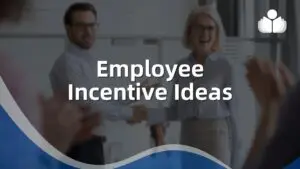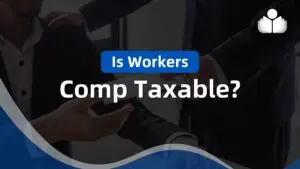© Copyright Carter McNamara, MBA, PhD, Authenticity Consulting, LLC.
Directions
The following framework will guide you through the completion of your basic strategic plan document. (There are many models for strategic planning — this framework is for conducting a goals-based plan.) Each section includes directions. Many sections include examples, as well. In addition, sections include links to related, additional information to help the reader fill out that section of the framework.
NOTE: The framework depicts a useful format, but should be duplicated into an editable version, for example, into Microsoft Word.
Readers are encouraged to work with a planning team in their organization to fill in this framework. After completing this framework, readers can move information from the framework to a more suitable document to be the final version of the strategic plan document, if desired.
(Note that there are a wide variety of perspectives and approaches regarding strategic planning. The library topic Strategic Planning provides overviews of many of these perspectives and approaches.)
Also, consider
Related Library Topics
[NAME OF YOUR ORGANIZATION!!]
[insert dates!!]
[insert date that plan was authorized by board by
directors (in the case of a corporation)!!]
TABLE OF CONTENTS
Executive Summary
Board Authorization of Strategic Plan [in the
case of a corporation!!]
Organizational Description
Mission, Vision and Values
Goals and Strategies
Appendices
A – Action Planning (objectives, responsibilities and time lines)
B – Description of Strategic Planning Process Used
C – Strategic Analysis Data (External Analysis, Internal Analysis
& List of Issues)
D – Goals for Board Committees and Chief Executive Officer
E – Staffing Plans
F – Operating Budgets
G- Financial Reports (Budgets, Statements, etc.)
H – Monitoring and Evaluation of Plan (Criteria, Responsibilities
and Findings)
I – Communicating the Plan
Executive Summary
(Complete this section after you have finished the other sections of the plan document. The Executive Summary describes plan highlights to bankers/funders, board members, employees and other stakeholders. The Executive Summary should be one to two pages in length at most. It should include very concise descriptions of the most important information from the strategic planning process and its results. For example, include very brief descriptions of what’s in this document and how to use the document, strategic issues and goals, when the plan will be implemented, how the implementation will be monitored and by whom, and any specific actions required by upper management.)
Board Authorization of Strategic Plan [in the
case of a corporation!!]
(Authorization designates board member’s approval of the strategic direction and action plans described in this strategic plan document.)
Name of Board Member: ___________
Date Signed: _________
Name of Board Member: ____________
Date Signed: _________
Name of Board Member: ____________
Date Signed: _________
(etc.)
Organizational Description
This section should include information that will be informative, particularly to readers from outside of the organization.
- Brief overview of history of organization
- Description of major products and services
- Overview of major accomplishments and other highlights during history of organization
Mission Statement
The mission statement is a concise description of the purpose of the organization. It answers the question: Why does our organization exist? When answering this question, include the nature of your products and services, and the various groups of customers that buy the products and services. The mission statement should provide continued direction and focus to your plans and operations. Post your mission statement throughout your organization, on all stationery, in your plan documents, etc. (For additional assistance, see Writing Mission Statements.
Your Mission Statement: ____
Vision Statement
The vision statement is an inspirational, compelling answer to the question: What do you hope for your organization and customers? Ideally, it should be written in a compelling, inspirational fashion. Post your vision statement throughout your organization. (For additional assistance, see Writing Vision Statements.)
Your Vision Statement: ____
Values Statement
The values statement depicts the priorities in how the organization carries out activities with stakeholders. The board and chief executive should regularly reference the values statement to provide guidance to the nature of how the organization should operate. (For additional assistance, see Writing Values Statements.)
Your Values Statement: ___
Goals and Strategies
Goals are identified from having
taken a wide look around the outside of the organization (an external analysis) and careful look inside the nonprofit (an internal analysis), and then identifying what are the most important issues to address. Appendix C includes information to organize this analysis. Your Goals Should Be “SMARTER” When you design and word your goals, be sure they are “SMARTER”, that is, specific, measurable, acceptable to the people working to achieve the goals, realistic, timely, extending the capabilities of those working to achieve the goals and rewarding to them. Don’t worry so much about having to specify goals to be exactly “correct”. Your goals are likely to be modified somewhat as you give more attention later on to product design.
You Will Likely Have Organization-Wide and Product/Service-Specific Goals
You will probably have organization-wide goals, for example, goals in regard to building and running your organization, for example, board development, staffing, getting a new building, etc. You also will probably have goals that directly in regard to building, producing and selling products or services to your customers.
Write Down Goals to Address Issues
Below, write down the strategic goals that must be achieved in order to address the issues listed in Appendix
C. Think about what must be achieved in order to address the issues. Consider goals over the term of your strategic plan, but look very closely at the next year especially. (For additional assistance, see Strategizing.)
Write Down Forward-Looking Goals
Next, write down more forward-looking goals. If you are developing a new organization, then you’ll probably have goals to build a board, do a strategic plan, do a market analysis to build a program, get volunteers, hire staff, etc. Consider goals over the term of your strategic plan, but look very closely at the next year especially. (For additional assistance, see Strategizing.)
Next, Associate Strategies with Each Goal
Next , under each goal, write down the major approaches (or strategies) that must be used to achieve each goal. Consider strategies over the term of the strategic plan, but especially over the next year. (For additional assistance, see Strategizing.)
Now Consider: Are the Goals and Strategies Closely Aligned with Organization’s Mission, Vision and Values?
Does each goal and its associated strategies really contribute toward the mission and vision of the organization. Will the goals be reached by using strategies that are closely aligned with the values of the organization? If not, then very closely reconsider whether you want to pursue those goals and associated strategies.
Goals and Strategies (Cont.)
(Make copies of this page as needed.)
Your Goals and Strategies
Goal # 1 (Write them to be “SMARTER”)
Strategy # 1.1
Strategy # 1.2
Goal # 2
Strategy # 2.1
Strategy # 2.2
(etc.)
Appendix A — Action Planning (objectives, responsibilities and timelines)
In the section labeled “Your Action Plans” below, write down action plans, especially for the next year. Action plans specify how the strategic goals and strategies will be carried out. Action plans often include various objectives to be reached while achieving each goal, who is responsible for achieving each objective and by when. Write objectives to be “SMARTER”. (For additional assistance, see Action Planning.)
(Make copies of this page as needed.)
Goal # 1 (Write them to be “SMARTER”)
Strategy # 1.1
|
Objectives |
Date of Completion |
Respon-
sibility |
Status |
| | | | |
(etc.)
Appendix B – Description of Strategic Planning Process Used
This appendix might include, for example,
- description of how the strategic plan document was developed
- who was involved in the planning
- any major problems and lessons learned during the planning process
- etc.
Appendix C – Strategic Analysis Data — External Analysis
An external analysis looks at societal, technological, political, and economic trends effecting the organization, e.g., recent or pending legislation, demographic trends, rate of access to trained labor, and competition. In your external analysis, don’t forget to look at stakeholders’ impressions of the organization, including bankers’/funders’, customers’, community leaders’, etc. (For additional assistance, see
Taking a Wide Look Around the Outside of the Organization.)
From out external analysis, we identified the following trends and how they might effect our organization:
Political trends:
Economic trends:
Societal trends:
Technological trends:
Other trends:
Appendix C – Strategic Analysis Data — Internal Analysis
Write down the major strengths and weaknesses of your organization. Consider the quality of operations of the Board, products, staffing, finances, facilities, marketing, etc. (For additional assistance, see Looking at Organization’s Strength’s, Weaknesses, Opportunities and Threats (SWOT).)
From out internal analysis (our SWOT analysis), we identified the following factors:
Strengths of the organization:
Weaknesses of the organization:
Appendix C – Strategic Analysis Data — Listing of Strategic Issues
New businesses, in particular, are often better off to first look at the major obstacles or issues that if faces, and next identify the more forward-looking, developmental goals to accomplish over the next few years. For example, current issues might be that sales are flat, there is high employee turnover, etc. Developmental goals for a new organization might be, for example, build a board, do a strategic plan, do a market analysis to build a product, hire staff, etc.
To identify the key issues identified from your strategic analyses, consider the following guidelines:
a) From considering the effects of weaknesses and threats that you identified, what are the major issues that you see? List as many as you can. Consider issues over the term of your strategic plan, but look very closely at the next year especially. Many organizations have stumbled badly because they ended up “falling over their feet” while being focused much too far down the road.
b) Consider each of the issues. Ask whether it’s “important” or “urgent.” Often, issues seem very important when they’re only urgent, for example, changing a flat tire is an urgent issue — but you’d never put “changing a tire” in your strategic plan. Attend only to the important issues and not the urgent issues.
c) Deal with issues that you can do something about. Issues that are too narrow do not warrant planning and issues that are too broad will bog you down.
d) Issues should be clearly articulated so that someone from outside of the organization can read the description and understand the nature of the issue. (The following link may be useful at this point when identifying issues: Life Cycles of Organizations.)
Key issues that our organization must address through use of this strategic plan include:
1. ________________________
2. ________________________
3. ________________________
4. ________________________
(etc.)
Appendix
D -Goals for Board Committees and Chief Executive Officer
Organize Appropriate Board Committees [in the case of corporations!!]
Board committees should be developed that associate with each of the major areas of strategic goals. For example, if a strategic goal is to build and develop the board, then consider a Board Development Committee. (Of course, you will have other types of board committees to address ongoing major activities that are not directly associated with types of strategic goals, for example, an executive committee.)
Build Board Work Plans
One of the best ways to ensure that board committees are fully participative and effective is through use of work plans for each board committee. With the board members, design work plans for each committees. Write goals and/or objectives to be “SMARTER”. A work plan is the plan that each board committee references to guide completion of their contribute to the organization’s strategic plan. For example:
Work Plans for Your Board Committees
(Make copies of this page as required.)
Board Committee _______
Committee Chair _______
Goal # 1(Write them to be “SMARTER”)
Strategy 1. 1
|
Objectives |
Date of Completion |
Respon-
sibility |
Status |
| | | | |
(etc.)
Goals for the Chief Executive
The board [in the case of corporations!!] is responsible to provide ongoing governance and direction the
organization. Usually, the board decides to carry out their responsibilities by including the role of a chief executive in the organization. The board is responsible to oversee the performance of the chief executive and evaluate the performance of the chief executive on a regular basis.
The chief executive should be attending to responsibilities and goals that are directly aligned with the
strategic goals of the organization (as should the responsibilities and goals of everyone else in the organization). Therefore, after strategic goals have been identified, it’s timely for the board to update the performance goals of the chief executive (who, in turn, updates the performance goals of everyone else in the management and employees in the organization). (For additional information, see Performance Management, Board of Director’s Evaluation of Chief Executive and Employee Performance Management.)
Goals may need to be reworded to be more specific to the authority and resources of the chief executive role.
Goals should be designed and worded to be “SMARTER”, that is, specific, measurable, acceptable to the chief executive, realistic, timely, extending the capabilities of the chief executive and rewarding for him or her to accomplish.
Your Goals for Your Chief Executive
(Write goals to be “SMARTER”.)
1. _________________________
2. _________________________
3. _________________________
4. _________________________
(etc.)
Appendix E – Staffing Plans
Reference each of the strategies to reach the goals and consider what kind of capabilities are needed to implement the strategies. This might seem like a lot of guesswork, particularly if you don’t have experience in supervision. However, don’t worry so much about being exactly correct — you will likely refine your staffing plan later on as you design and plan your products in the development process. If you are developing a new organization, you might think about including the following typical roles in your initial staffing plan (but again, consider these roles in terms of implementing the strategies in your plan): chief executive, administrative assistant and product managers for each of your major products. However, it’s common that the chief executive is also a product manager or the first year or so. You may end up refining the staffing plan as you complete action planning, along with identifying who will accomplish each of your objectives. (The following link may help you when developing your staffing plan. See Organizing Staff.)
Note that in the following table, staffing is specified in terms of full-time equivalents (FTEs). One FTE is equal to one full-time staff position throughout the year. If staff will start half-way through a year, than include .5FTE, etc.
|
Staff Position |
Year |
Year |
Year |
| Central Administration, General Operating Activities: | |||
| | | |
| | |
| | |
| | |
| | | |
| | |
| | |
| | |
| | | |
| | |
| | |
| | |
| | | |
| | |
| | |
| | |
| | | |
| | |
| | |
| | |
| Staff for Products [insert name!!]: (have a section for each product) | |||
| | | |
| | |
| | |
| | |
| | | |
| | |
| | |
| | |
| | | |
| | |
| | |
| | |
| | | |
| | |
| | |
| | |
| | | |
| | |
| | |
| | |
Appendix F – Operating Budgets
In the table labeled “Your Budget Planning” included below, list the resources you will need to achieve the
goals in the strategic plan and the costs to get and use the resources — especially over the next year. You don’t have to be exactly accurate — besides, you may end up changing your budget as you give more attention to product design and planning. You should do a budget for each of the years included in the span of time covered by your strategic plan — but give particular attention to the first year of the time span.
Look at each of your products. Think about how much revenue the product might generate. Next, think about the expenses to run the program, such as human resources, facilities, equipment, special materials, marketing and promotions, etc.
Now think about what resources will be needed for central administration. Will you need a chief executive officer, assistants, etc?
(For additional information, see The Right Way to Prepare a Budget)
Example Operating Budgets
The following multi-year budget is an example to help you think about the types of resources you may need to achieve the goals in our plan and to help you think about how you’ll develop your operating budgets.
Note that the following budget includes 40% “fringe” — this is the extra amount budgeted to cover benefits, for example, medical insurance, social security taxes, retirement contributions, etc. You should find estimates
of the current fringe rate for salaries — or, you can budget specific amounts for each of the specific benefits.
Also note that the following is a rather simple budget format and should be modified to suit the needs and nature of your organization.
| REVENUE: |
Year 1 |
Year 2 |
Year 3 |
| Product A Sales | |||
| Product B Sales | |||
| Earned Income | |||
TOTALREVENUE |
|||
EXPENSES |
|||
| Central Administration — Personnel: | |||
| Chief executive officer (include yearly salary + 40% for benefits, etc.) | |||
| Administrative assistant (include yearly salary + 40% for benefits, etc.) | |||
| Travel | |||
| Staff development | |||
| Total Central Administration — Personnel Costs: | |||
| Central Administration — Facilities: | |||
| Rental of office space (central offices and 4 classrooms) | |||
| Office furniture | |||
| Utilities (electricity, water, heat) | |||
| Telephone (local & long-distance) | |||
| Maintenance and janitorial | |||
| Total Central Administration Facilities Costs: | |||
| Central Administration — Equipment: | |||
| Copier leasing | |||
| Computer, printers, networking | |||
| Training equipment, projectors, etc. | |||
| Vans (4 for student transportation) | |||
| Total Central Administration Equipment Costs: | |||
| Central Administration — Marketing and Promotions: |
|||
| Media plan (brochures, newspaper ads, etc.) | |||
| Yearly meeting | |||
| Annual report | |||
| Build and maintain mailing list | |||
| Web page development and maintenance | |||
| Total Central Admin. Marketing & Promotions Costs: | |||
| Other Expenses: | |||
| General office supplies | |||
| Liability insurance | |||
| Subscriptions, books, etc. | |||
| Total Central Admin. Other Expenses/Costs: | |||
| Product A (a training package) — Personnel: |
|||
| Program manager (include yearly salary + 40% for benefits, etc.) | |||
| Consultant: curriculum design (3 months full-time; 9 months 2 hours per day) | |||
| Consultants: teachers (4 full time and 4 half time) | |||
| Consultants: psychologist/counselor (1 full time) | |||
| Misc. | |||
| Total Product A Personnel Costs: | |||
| Product B — Materials: | |||
| GED testing packets (600) | |||
| Grading services from Dept of Human Services (600 students) | |||
| 600 self-study guides | |||
| Support group facilitator guides | |||
| Total Product A Materials Costs: | |||
TOTAL EXPENSES |
|||
| TOTAL SURPLUS (OR DEFICIT) (= revenue minus expenses) |
|||
Your Budget Planning
The following table may need to be modified to suit the needs and nature of your organization. (See the advice and materials suggested in the previous section.)
| REVENUE: |
Year 1 |
Year 2 |
Year 3 |
| Product A Sales | |||
| Product B Sales | |||
| Earned Income | |||
TOTALREVENUE |
|||
EXPENSES |
|||
| Central Administration — Personnel: | |||
| Chief executive officer (include yearly salary + 40% for benefits, etc.) | |||
| Administrative assistant (include yearly salary + 40% for benefits, etc.) | |||
| Travel | |||
| Staff development | |||
| Total Central Administration — Personnel Costs: | |||
| Central Administration — Facilities: | |||
| Rental of office space (central offices and 4 classrooms) | |||
| Office furniture | |||
| Utilities (electricity, water, heat) | |||
| Telephone (local & long-distance) | |||
| Maintenance and janitorial | |||
| Total Central Administration Facilities Costs: | |||
| Central Administration — Equipment: | |||
| Copier leasing | |||
| Computer, printers, networking | |||
| Training equipment, projectors, etc. | |||
| Vans (4 for student transportation) | |||
| Total Central Administration Equipment Costs: | |||
| Central Administration — Marketing and Promotions: |
|||
| Media plan (brochures, newspaper ads, etc.) | |||
| Yearly meeting | |||
| Annual report | |||
| Build and maintain mailing list | |||
| Web page development and maintenance | |||
| Total Central Admin. Marketing & Promotions Costs: | |||
| Other Expenses: | |||
| General office supplies | |||
| Liability insurance | |||
| Subscriptions, books, etc. | |||
| Total Central Admin. Other Expenses/Costs: | |||
| Product A (a training package) — Personnel: |
|||
| Program manager (include yearly salary + 40% for benefits, etc.) | |||
| Consultant: curriculum design (3 months full-time; 9 months 2 hours per day) | |||
| Consultants: teachers (4 full time and 4 half time) | |||
| Consultants: psychologist/counselor (1 full time) | |||
| Misc. | |||
| Total Product A Personnel Costs: | |||
| Product B — Materials: | |||
| GED testing packets (600) | |||
| Grading services from Dept of Human Services (600 students) | |||
| 600 self-study guides | |||
| Support group facilitator guides | |||
| Total Product A Materials Costs: | |||
TOTAL EXPENSES |
|||
| TOTAL SURPLUS (OR DEFICIT) (= revenue minus expenses) |
|||
Appendix G – Monitoring and Evaluation of Plan
Responsibilities and Frequencies for
Monitoring and Evaluation
|
Plan’s section, goals, |
Completion |
Respon- |
Written |
| | | |
|||
| | | |
|||
| | | |
|||
| | | |
|||
| | | |
|||
| | | |
Key Questions While Monitoring Implementation of the Plan
(The following questions should be modified to suit the nature and needs of the organization.)
Monitoring and evaluation activities will consider the following questions:
1. Are goals and objectives being achieved or not? If they are, then acknowledge, reward and communicate the progress. If not, then consider the following questions.
2. Will the goals be achieved according to the timelines specified in the plan? If not, then why?
3. Should the deadlines for completion be changed (be careful about making these changes — know why efforts are behind schedule before times are changed)?
4. Do personnel have adequate resources (money, equipment, facilities, training, etc.) to achieve the goals?
5. Are the goals and objectives still realistic?
6. Should priorities be changed to put more focus on achieving the goals?
7. Should the goals be changed (be careful about making these changes — know why efforts are not achieving the goals before changing the goals)?
8. What can be learned from our monitoring and evaluation in order to improve future planning activities and also to improve future monitoring and evaluation efforts?
Additional questions:
Reporting Status of Implementation
Results of monitoring and evaluation will be in writing, and will include:
1. Answers to the “Key Questions While Monitoring Implementation of the Plan”
2. Trends regarding the progress (or lack thereof) toward goals, including which goals and objectives
3. Recommendations about the status
4. Any actions needed by management
Procedure for Changing the Plan
Regarding any changes to the plan, write down answers to the questions:
1. What is causing changes to be made?
2. Why the changes should be made (the “why” is often different than “what is causing” the changes).
3. What specific changes should be made, including to goals, objectives, responsibilities and timelines?
Reminders:
Manage the various versions of the plan (including by putting a new date on each new version of the plan).
Always keep old copies of the plan.
Appendix H – Communicating the Plan
Note that certain groups of stakeholders might get complete copies of the plan, including appendices, while
other groups (usually outside of the organization) might receive only the body of the plan without its appendices.
Consider:
1. Every board member and member of management should get a copy of the plan.
2. Consider distributing all (or highlights from) the plan to everyone in the organization. It’s amazing how even the newest staff member gains quick context, appreciation, and meaning from review of the strategic plan.
3. Post your mission and vision and values statements on the walls of your main offices. Consider giving each employee a card with the statements (or highlights from them) on the card.
4. Publish portions of your plan in your regular newsletter, and advertising and marketing materials (brochures, ads, etc.).
5. Train board members and employees on portions of the plan during orientations.
6. Include portions of the plan in policies and procedures, including the employee manual.
7. Consider copies of the plan for major stakeholders, for example, funders/investors, trade associations, potential collaborators, vendors/suppliers, etc.
(For additional assistance, see Writing and Communicating the Plan.)
This plan will be widely communicated including through use of the following approaches:
1. _____________________
2. _____________________
3. _____________________
4. _____________________
(etc.)
For the Category of Strategic Planning:
To round out your knowledge of this Library topic, you may want to review some related topics, available from the link below. Each of the related topics includes free, online resources.
Also, scan the Recommended Books listed below. They have been selected for their relevance and highly practical nature.
 Sections of this topic
Sections of this topic
















